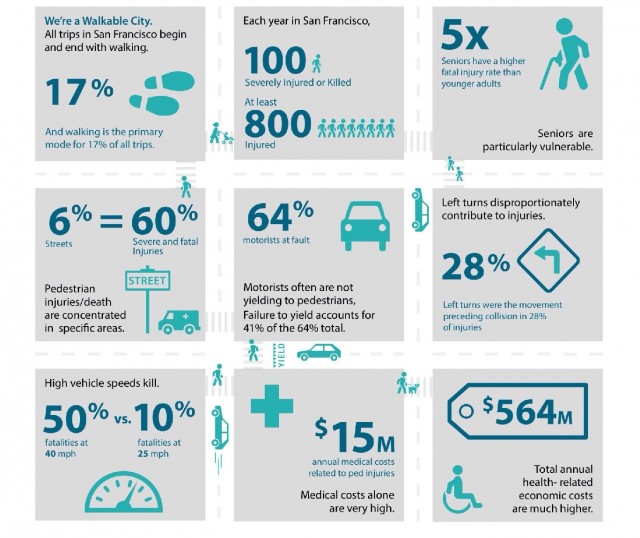
San Francisco transportation officials have unveiled a new round of street safety initiatives to curb pedestrian deaths and injuries by targeting the city's most dangerous intersections for makeovers. While pedestrian advocates praised the measures, they remained concerned the bulk of the plan lacked funding.
“Any pedestrian death or serious injury is one too many,” said Mayor Ed Lee, who held a City Hall press conference to announce the recommendations of "Walk First," a data-driven effort in which transportation officials and planners analyzed more than 2,000 vehicle collisions involving pedestrians.
They found that 60 percent of pedestrian injuries and deaths occur on just 6 percent of streets, which are mostly concentrated in the Tenderloin, SoMa and North Beach. On average, they said, more than 100 pedestrians are "severely injured or killed" citywide each year, while 800 pedestrians are injured.
Officials have identified the biggest trouble spots, and have recommended that these intersections undergo "quick, cost-effective improvements." They include better crosswalks, reduced lane widths, turn prohibitions, speed humps, protected left turns and temporary pedestrian refuge islands.
While $17 million has been "leveraged" to improve "170 priority locations" over five years, the SFMTA still needs $33 million to fix all 265 intersections identified in the plan. To fund all of the plan's recommendations, the estimated price tag would be $240 million.